
Preservation Rhinoplasty
Preservation rhinoplasty is a relatively new and advanced concept in nose surgery that aims to preserve the natural structure and function of the nose while achieving cosmetic improvements. Standard surgical techniques are ablative procedures since the excess bone and cartilage which causes a dorsal hump is usually excised. The concept of preservation means that tissue is not removed but simply reshaped to produce the same changes. This helps to maintain the structure and function of the nose as well as providing long term stability.
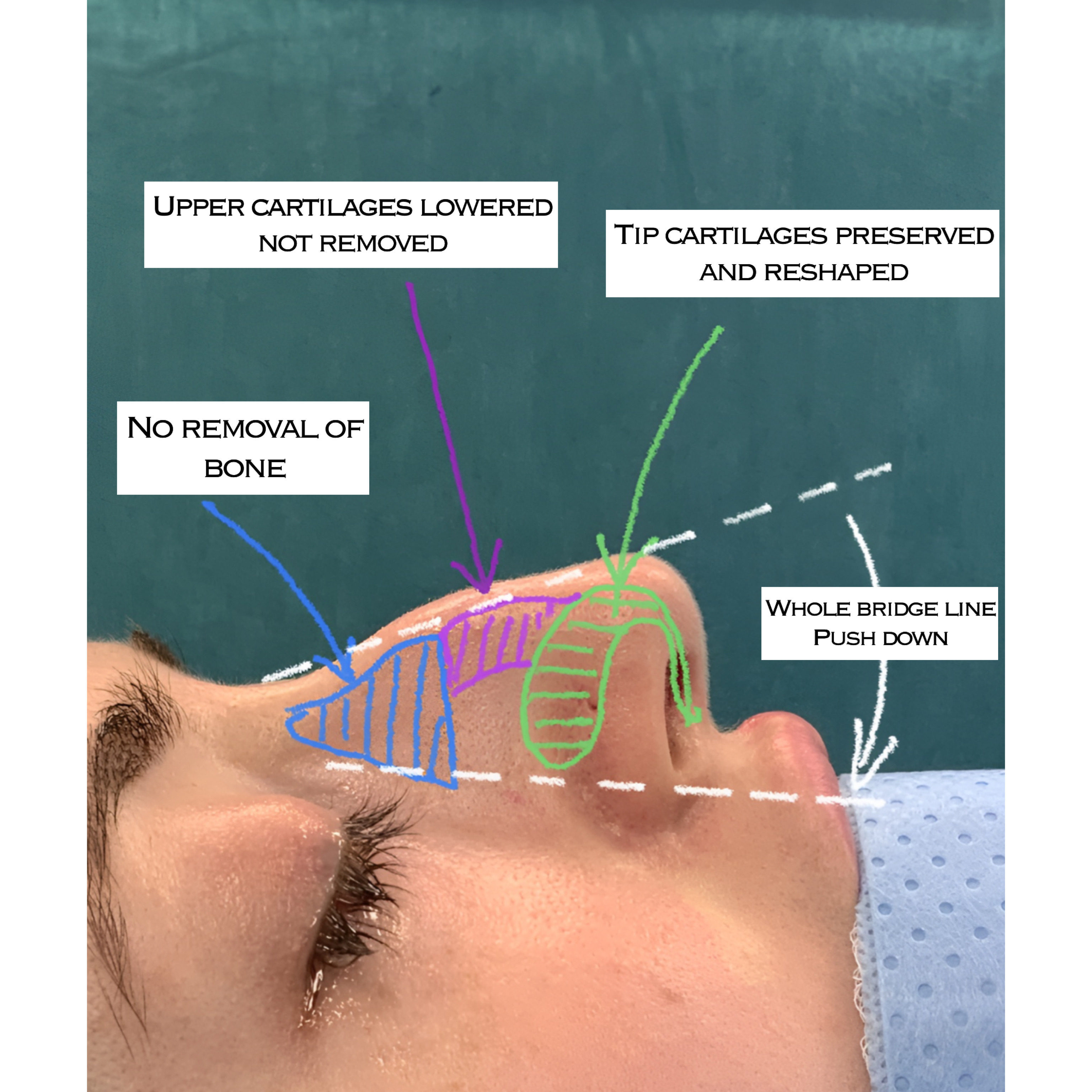
Preservation rhinoplasty surgery is typically performed using a combination of techniques, including:
Preserving the bone along the bridgeline: rather than removing the excess bone, the nose is dropped into the nasal cavity by weakening the nasal bones at the base and sliding them into the nasal cavity. This reduces the size of the nose and reduces any dorsal hump. This achieves a smoother bridgline and reduces the risks of irregularities.
Cartilage reshaping: Rather than removing cartilage, preservation rhinoplasty seeks to reshape and reposition the existing cartilage. The cartilages on the bridgeline also form an important breathing valve. Rather than removal which can cause deformity the repositioning helps to preserve the function of these cartilages.
Tip refinement: The tip of the nose is the most prominent and defining feature of the nose. Preservation rhinoplasty seeks to refine the tip of the nose by reshaping the existing cartilage rather than removing it. This is achieved by folding the cartilages and using sutures to hold the cartilages in a better refined and narrower position. Excess removal which can weaken these cartilages, causing late deformity is therefore avoided.
Grafting: In some cases, additional cartilage may be needed to achieve the desired cosmetic result. In preservation rhinoplasty, this cartilage is typically obtained from the patient's own nasal septum. The cartialge removed from one part of the nose where it is not needed is then replaced in another part. This means that the total amount of cartilage is preserved.
Benefits of Preservation Rhinoplasty Surgery
Preservation rhinoplasty offers several benefits over traditional rhinoplasty, including:
- Preservation of natural nasal function: One of the primary benefits of preservation rhinoplasty is that it seeks to preserve the natural function of the nose. This means that patients are less likely to experience breathing difficulties or other complications after surgery.
- Reduced recovery time: Because preservation rhinoplasty involves less tissue removal than traditional rhinoplasty, patients typically experience a shorter recovery time, less swelling and less postoperative pain.
- More natural-looking results: Preservation rhinoplasty seeks to preserve the natural structure of the nose, which can result in more natural-looking results.
- Lower risk of complications: Preservation rhinoplasty involves less tissue removal than traditional rhinoplasty, which reduces the risk of complications such as irregularities, weakening and loss of support and scar contracture
Who is a Good Candidate for Preservation Rhinoplasty Surgery?
Preservation rhinoplasty surgery may be suitable for patients who:
- have mild to moderate dorsal humps
- require moderate changes to the nasal tip in terms of refinement or deprojection
- have mild bone deviation
- have not had previous nose surgery
Preservation rhinoplasty surgery is not without its drawbacks, including limited improvements in some types of nose which may not be suitable for this technique: Preservation rhinoplasty surgery may not be suitable for patients who require significant changes to the structure of their nose such as:
- Patients with severe and very high dorsal humps and some
- patients who have significant nasal deviations
- patients who have suffered trauma resulting in deformity
- patients who have had previous rhinoplasty
How is the Preservation Rhinoplasty Surgical Procedure Performed?
Preservation rhinoplasty surgery is performed under general anaesthesia and can take anywhere between 1nd a half to 3 hours.
The procedure begins with the surgeon making small incisions inside both the nostrils which is called a 'closed' rhinoplasty approach. Through these incisions a space is made under the skin which provides access to the bone and cartilage along the bridgeline and the cartilages of the nasal tip. The cartilage of the septum is accessed through the same incisions.
In some cases, the surgeon may need to use an open approach to preservation rhinoplasty, which involves making an additional incision across the columella. This approach provides a better access to the nasal structures and can be beneficial in cases where significant reshaping is required.
After accessing the bone and cartilage to the bridgeline, the bones at the nasal base are weakened in entirety. This allows the whole bridgeline to drop since the nasal bones can be pushed down a variable degree into the nasal cavity. This is called a ‘pushdown’ technique. The aim of this manoeuvre is to reduce the dorsal hump or simply to reduce the size of the nose.
The diagram here explains the 'push-down' technique where the nasal bones slide down into the nasal cavity.
As the nasal bones slide down into the nasal cavity the bridge line is lowered reducing the size of the nose and correcting any dorsal hump which is also lowered.
As part of the preservation technique it means that large amounts of bone are not removed which improves the recovery and healing process .
The push down also retains the integrity along the bridge line . This part of the procedure is also known as dorsal preservation.
In standard rhinoplasty a large amount of the whole skin envelope covering the nose needs to be elevated to gain access to the whole bone and cartilage along the bridge line since the bone and cartilage is removed from 'above'. This is a cause for excessive swelling and brusing. In preservation techniques the skin does not need elevation since the surgery is performed from 'below' .
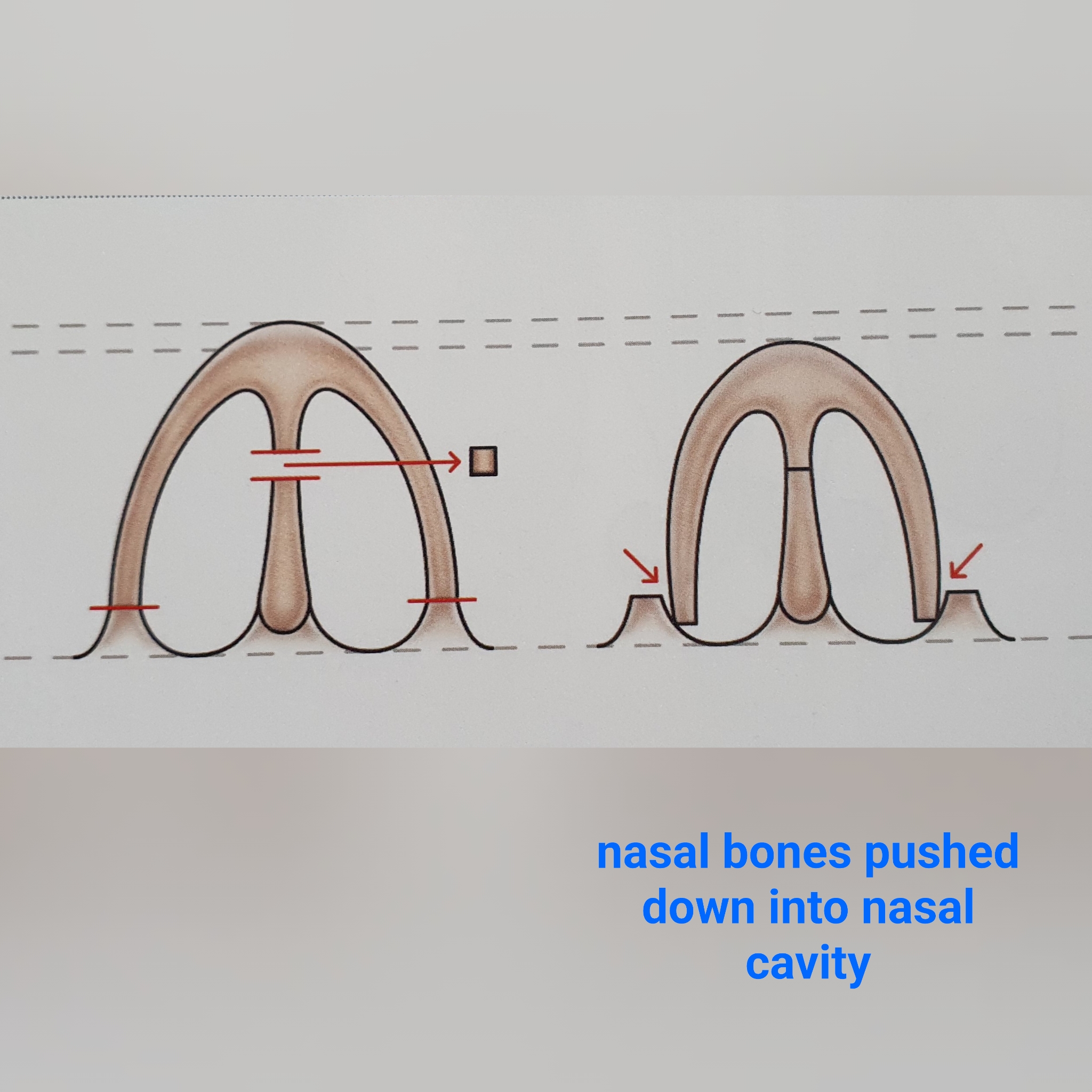
The next step is to refine the cartilages of the nasal tip. The tip cartilages are refined by placing sutures to narrow the curvature of the tip cartilages and these pair of cartilages are also sutured together which produces further refinement. A graft to support these cartilages may be used to provide long term support and stability. This graft is a piece of cartilage which is taken from the septum.
At the end of the surgery the incisions are closed with dissolvable stitches and tape is applied to the outside of the nose to support the new shape during the healing phase. In many cases a nasal cast may not even be needed since the nasal bones have not been broken as such.
Hybrid preservation rhinoplasty surgery
In patients who may be unsuitable for a 'pure' preservation rhinoplasty a hybrid technique is beneficial where a traditional technique is combined preservation. For example a traditional bone reduction or even using an ultrasonic technique for the bony hump may be combined with preservation techniques for the cartilages of the bridgeline and nasal tip. In this way the benefits of both approaches are combined to suit individual anatomy.
What is the recovery from preservation rhinoplasty surgery?
In general the recovery tends to be less arduous than a traditional rhinoplasty. Since the surgery is a minimally invasive technique the procedure is performed as a day case which means you can go home the same day. Often this may be only a few hours after the surgery.
There is minimal bruising and swelling. Although the initial recovery time for preservation rhinoplasty varies depending on the extent of the surgery usually by 1 week when the nasal dressing is removed there is unlikely to be any bruising visible.
It is important to rest and sleep upright in the first week after surgery since this helps to reduce swelling.
Most patients can return to work within one to two weeks following the surgery, although it is important to avoid heavy exercise for approximately six weeks.
By six weeks the structures of the nose have healed but it may take several months and up to a year for the final results to become fully apparent.
Choosing a Surgeon for Preservation Rhinoplasty
Choosing the right surgeon is essential for a successful preservation rhinoplasty procedure. Currently very few and a highly select group of surgeons in the UK are routinely offering preservation techniques. Experience in the technique is important but also the decision making in terms of which patients are suitable is critical. Based in London, Mr Chana is experienced in preservation rhinoplasty techniques and will provide the necessary advice and guidance at a Consultation
Is Preservation rhinoplasty suitable for you ?
If you are interested in rhinoplasty due to any aspect of your nose which is concerning you the next step is to have a Consultation by phoning our London office or completing the enquiry form on this website.
The decision to undergo rhinoplasty will depend upon a number of factors and is a personal decision guided by a detailed and thorough explanation of the benefits of the procedure, the likely outcome and potential risks. It is only after a consultation and an examination of your nose that you can make a fully informed decision on whether you would benefit from undergoing the procedure. Mr Chana will normally see you twice before planning your surgery since there may be secondary questions and aspects which are important to clarify in advance of the surgery. The morning of the surgery is never a good time to be uncertain about the overall plan for the surgery !
What are the risks of preservation rhinoplasty surgery?
While every effort is made to minimise the risk of complications the nature of surgery is such that risks may occur after any surgical procedure. These risks include:
Infection. – The inside of the nose is intrinsically an area which is not clean . There is a risk of infection following rhinoplasty . However, you will be provided with intravenous antibiotics at the time of surgery and oral antibiotics for a few days after the procedure
- Bleeding.- Bleeding is a risk of any procedure. These risks are minimised by reducing the level of activity after surgery and adhering to the post operative instructions. In general preservation rhinoplasty involves a minimal dissection technique with very little skin undermining. Bleeding and bruising is therefore less likely than a conventional rhinoplasty. During the surgery measures are taken to reduce this risk including expert techniques of anaesthesia to control the blood pressure, stopping visible bleeding points and administering a medication called tranexamic acid which further helps to stop any bleeding points. Before and after the surgery it is important to stop all herbal remedies and supplements and avoid non-steroidal medication.
- Loss of sensation.- Loss of sensation in the nasal skin is a risk . Usually all the nerves grow back which is a process which may take up to a year. However, there may be rare cases when there is some residual small area of loss of sensation
- Scarring.- Adverse scarring is rare with preservation rhinoplasty. The surgery is likely to be performed using a closed approach in many cases which avoids a scar on the columella. If an open approach is needed the incidence of adverse scarring is very remote. This scar heals very well indeed and is likely within a few months to be hardly noticeable. Certain darker skin types may be at higher risk.
- Asymmetry.- Mild Asymmetry is a risk but it should be remembered that asymmetry in faces is a normal trait. Perfect symmetry does not exist and it is unlikely this will be achieved following surgery. Within the constraints of your normal anatomy every effort is taken to ensure the best possible symmetry but in some cases mild differences betweenone side of the nose and the other may persist or develop after surgery.
- Changes in the nasal airflow.- The advantage of preservation rhinoplasty techniques is that the functional structure of the nose is retained and this includes the various cartilages which maintain airflow. Therefore permanent changes resulting in airway obstruction are very unlikely. However, in rare cases making the nose smaller or narrower has the potential to limit the airflow which may be noticeable to mild degrees to which you can become accustomed. However, in very rare cases a more noticeable limitation in airflow is possible.
- Revision surgery.- All rhinoplasty is subject to some changes which can occur during the healing period. Sometimes these changes result in a change in the position of either the bone or cartilages from the time of surgery . If this is significant then a secondary refinement procedure may be necessary . In preservation rhinoplasty an example of this can be a smaller hump recurrence. Since the technique involves a ‘push-down’ technique there can be circumstances where the hump bounces back up to a lesser degree during the healing period, this may then require adjustment. Adjustments are always carried out after all the healing has taken place and the tissues are fully settled which is about a one year after the initial surgery.
- Other risks: there are other less common risks of rhinoplasty and you will be provided with detailed consent forms which explain these risks before going ahead with the procedure.
Does preservation rhinoplasty surgery cost more than standard rhinoplasty ?
In general preservation rhinoplasty may cost more than traditional rhinoplasty since it is a more advanced technique offered by a very select group of highly experienced surgeons. However, this should not be the only factor to consider since the level and safety of the hospital facilities , the experience of the anaesthetist and standard of after care is all important.
Furthermore, the complexity of the surgery may vary between patients. For example one patient may require a more straightforward mild dorsal hump reduction and tip refinement whereas the other may require in addition septal surgery and alar base reductions which means added complexity and operating time to the surgery.
When ultrasonic rhinoplasty techniques are used in combination the equipment required is more specialised and expensive and this can affect the overall cost.
Therefore, the costs can vary and initial prices before a consultation are always a guide. After a consultation you will be provided with an individualised quote.

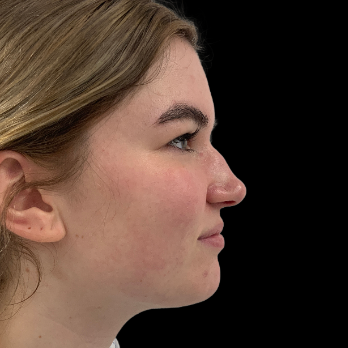
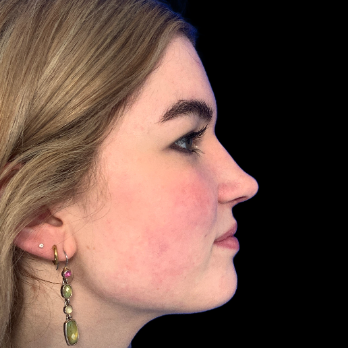
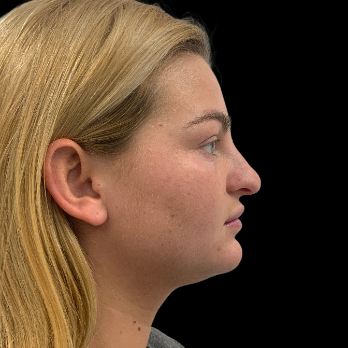
.jpg)
.jpg)
.jpg)